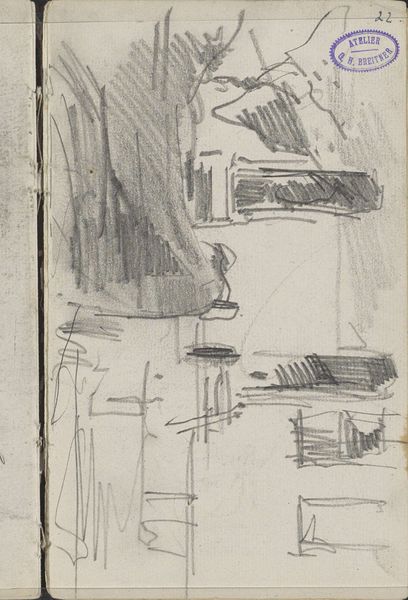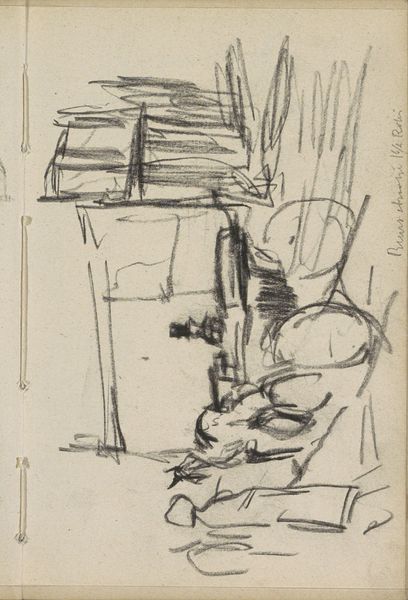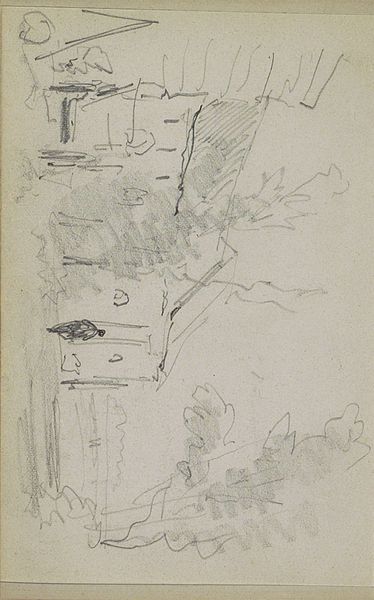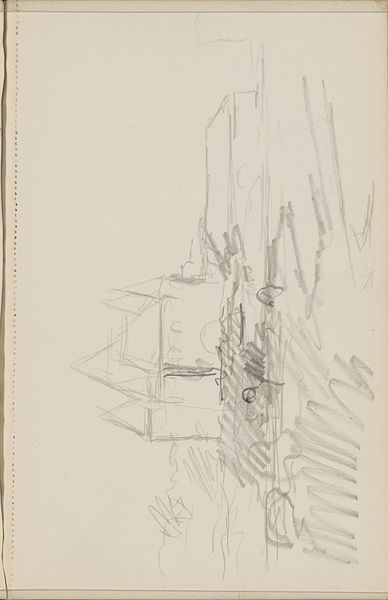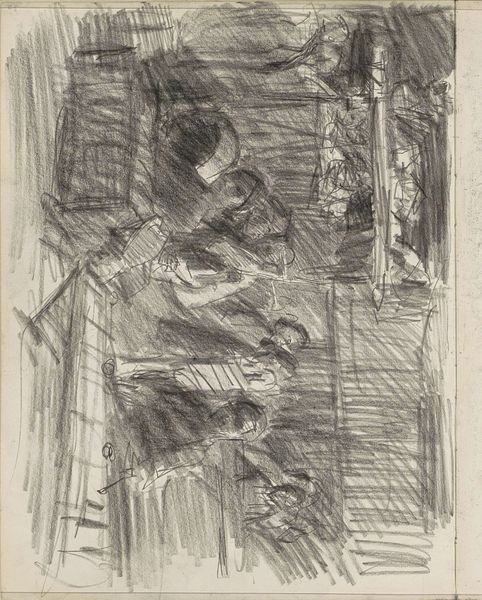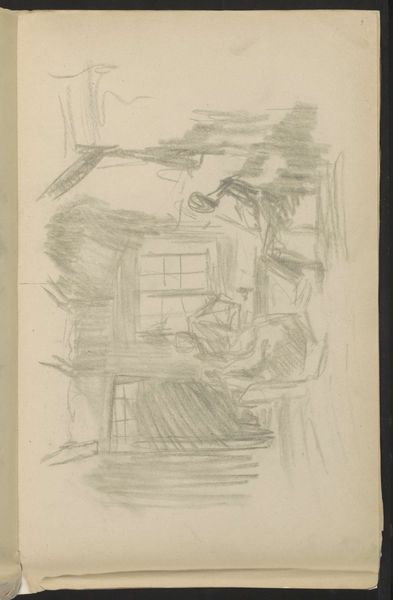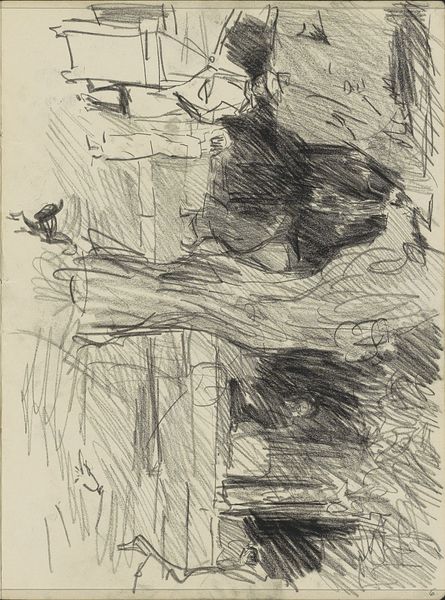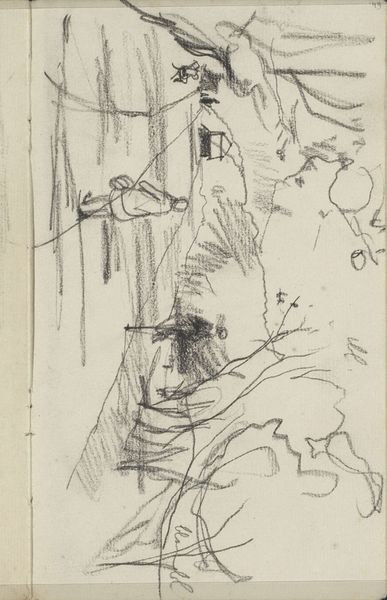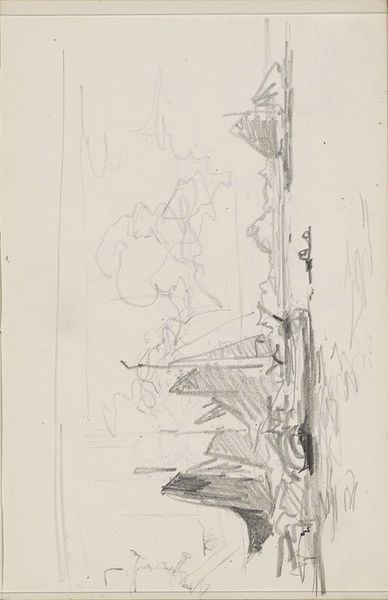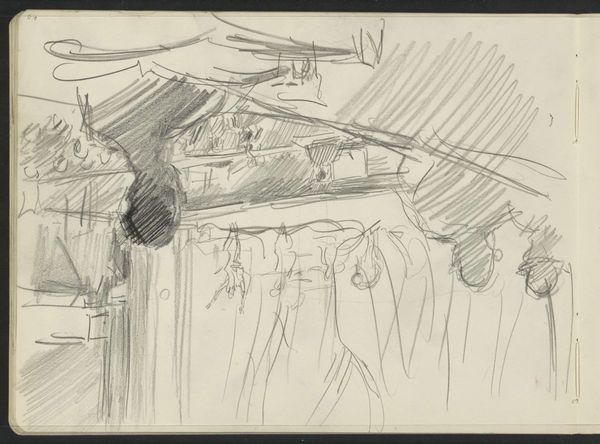
Copyright: Rijks Museum: Open Domain
Curator: Welcome. Before us, we have Isaac Israels' "Audience at a Gamelan Orchestra," likely sketched between 1921 and 1922. It's currently held here at the Rijksmuseum. Editor: My initial impression is one of bustling energy, but also detachment. The rapid lines create movement, but the figures feel indistinct, almost anonymous in the crowd. There is a strong sense of hierarchy, literally with different levels or platforms for the performers versus the audience. Curator: Indeed. Israels was known for capturing fleeting moments of modern life, and here, the hasty lines certainly emphasize that transient quality. He seems less interested in precise representation, and more in capturing the overall visual experience. We can analyze this as an investigation into line and form, observing how repeated marks define the visual field of figures. The varying densities and directions in the hatching denote different planes of depth and movement of the observed persons and objects. Editor: I see that, but can't help considering the context. The Gamelan orchestra suggests a colonial encounter – a European gaze upon Indonesian culture. Who are these audience members, and what does it mean for them to be observing this performance? Are they positioned as superior? There is this sense of “us” watching “them”. Curator: That’s a pertinent reading. Certainly, Israels' position as a Western artist is crucial to consider. We can still address, formally, that these gestural renderings do flatten individual identity—emphasizing the collective experience. Editor: Yes, the artistic style abstracts individuals but at the expense of obscuring complex power dynamics in a colonial framework, reducing these observations to something of a personal experience for the artist, even an aesthetic exercise divorced from that wider cultural impact and inequity. Curator: Perhaps that ambiguity is exactly what makes the drawing so compelling. It is not didactic in its representational agenda and resists prescriptive readings. Editor: And it reveals something in its refusal. The sketch reveals perhaps the artist's inability to engage fully with the socio-political dimensions of cultural exchange. Curator: It seems both our approaches illuminate different aspects of this work. Its power lies in both its artistic execution and historical context, making it a rich object for dialogue and ongoing interpretations. Editor: Absolutely. It's a work that invites us to consider not just what's on the page, but also the unsaid, the unseen, and the unheard voices present--and absent--from the scene.
Comments
No comments
Be the first to comment and join the conversation on the ultimate creative platform.



